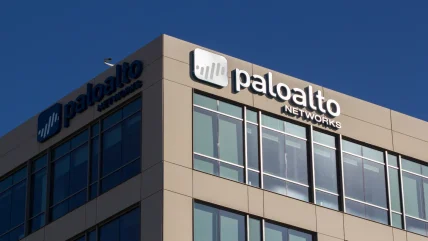
Palo Alto Networks has lifted its full-year revenue forecast for fiscal 2025 (FY25), citing continued enterprise investment in cybersecurity solutions to counter rising digital threats. The company expects sustained demand for AI-powered security tools as organisations seek to mitigate risks from online fraud and cyberattacks. For the third quarter (Q3), Palo Alto Networks anticipates revenue between $2.26bn and $2.29bn, aligning with analyst expectations. Its full-year outlook has been adjusted upwards to between $9.14bn and $9.19bn, slightly exceeding previous projections.
In Q3 FY25, the company expects earnings per share between $0.76 and $0.77. Next-Generation Security annual recurring revenue (ARR) is forecasted to reach between $5.03bn and $5.08bn, reflecting a year-on-year growth rate of up to 34%. Full-year guidance includes an expected non-GAAP earnings per share of $3.18 to $3.24, with revenue projected to grow by 14%. The company also anticipates an operating margin ranging from 28% to 28.5%.
Despite exceeding earnings expectations, Palo Alto Networks’ stock price declined by 4.15% in after-hours trading. Analysts suggest the drop may be linked to market sentiment and broader valuation concerns rather than the company’s financial performance.
In the second quarter ending 31 January 2025, the company reported a 14% year-on-year (YoY) revenue increase to $2.26bn, surpassing the consensus estimate of $2.24bn. Adjusted earnings per share stood at $0.81, higher than the forecasted $0.78. Non-GAAP net income for the quarter was $600m, compared to $500m in the same period last year. “In Q2, our strong business performance was fuelled by customers adopting technology driven by the imperative of AI, including cloud investment and infrastructure modernisation,” said Palo Alto Networks chairman and CEO Nikesh Arora.
Palo Alto Networks has strengthened its global presence through new partnerships and leadership changes. In January, the company announced a multi-year agreement with IBM UK to support the development of the Emergency Services Network in Britain. In addition, former Danish Prime Minister Helle Thorning-Schmidt and ex-UBS and ING Group CEO Ralph Hamers have joined the board, reinforcing the company’s leadership as it continues its expansion.
AI, cloud security, and strategic growth
On an earnings call, Arora pointed to growth across all regions and product lines, with demand rising for secure access service edge (SASE), software firewalls, and Extended Internet of Things (XIM) solutions. “On the profitability front, we delivered operating margins ahead of our internal target despite some one-time events,” he said.
Arora also addressed the increasing role of AI in cybersecurity. “As the conversation around AI continues to get omnipresent and companies race to evaluate, experiment, and deploy AI, they’re discovering that some of the legacy architectures come in the way of their aspirations,” he stated.
In line with this, Palo Alto Networks separately announced the launch of Cortex Cloud, an evolution of its Prisma Cloud platform. The solution integrates cloud detection and response (CDR) with its cloud-native application protection (CNAPP) capabilities under the unified Cortex platform. Designed with AI-driven automation, the platform aims to improve real-time security responses beyond traditional cloud protection methods.






